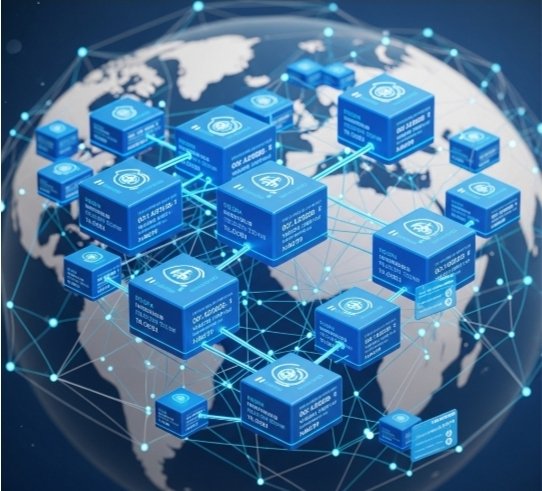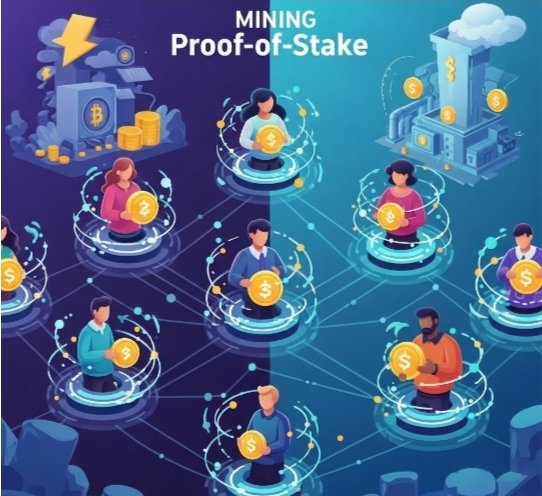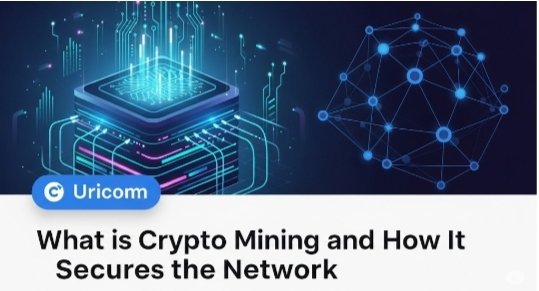Although terms like “blockchain” and “Bitcoin” are frequently used in cryptocurrency circles, few things are as basic and yet misunderstood as crypto mining. Why does this happen? The process is not a physical excavation, but it is what powers many of the world’s most important digital currencies. Can you explain what crypto mining is and how it contributes to the security of a global financial system?
By examining the intricate nature of cryptocurrency mining and its impact on blockchain technology, this article will provide an overview of why it is essential for network integrity and security.
What’s Crypto Mining? In essence, crypto mining is the process of adding new record of transactions into a blockchain (digital public ledger) called blockchain. This process is a crucial element of cryptocurrencies like Bitcoin, and it can be described as essentially ‘Proof-ofWork’ (PoW) system.

Considering the blockchain as an endless web of electronic blocks? The public record includes verified transactions in each block, and when a block is added to the chain, it becomes buried within the public account. Crypto miners are individuals or groups that use powerful computers to compete for the next block in a chain.
“Mining” is essentially a computational process. To solve intricate mathematical puzzles, miners rely on specialized hardware like ASICs for Bitcoin or GPU chips for other digital currencies. These devices are commonly used in mining. This is not an unsolved puzzle in the traditional sense; it’s a cryptographic challenge that requires significant computational power and requiring some trial and error.
When a puzzle is solved, the initial solver can add the following chain of transactions to the blockchain. They are rewarded with a portion of the newly mined cryptocurrency, as well as the transaction costs for every transaction included in that block. This system of rewards motivates miners to dedicate their resources to the network.
What are the methods employed by Crypto Mining to safeguard network security?

Especially in the context of financial transactions, a decentralized network is highly secure.’ In contrast to traditional banking, a cryptocurrency network has no central authority to verify every transaction. Why is this so? What steps can be taken to ensure trust and prevent fraud? It’s in the security of crypto mining and its PoW system that really shines.
- Preventing Double-Spending: Digital currency poses a significant challenge for users, as it involves the risk of “double-spending,” which occurs when they use the same digital token multiple times. This is directly addressed by the use of crypto mining.
The network receives broadcasts of the transaction. The unconfirmed transactions are grouped together into a block by miners. The cryptographic puzzle must be solved to mine this block. The computational complexity of this puzzle makes it almost impossible for a malicious actor to create espionage-type block and have it validated by the network. Why?
The blockchain is a permanent and unchanging entity after obtaining, mining, or adding unused blocks. Once consensus is reached, the new block in question must be confirmed by the entire network of miners and nodes. Re-examining not just the initial block of a transaction would be necessary to modify it, making it computationally and economically challenging.
- Decentralization and Immutability: One of the key features of crypto mining, which is decentralized, is its security. No single server or authority is in charge of the network. Instead, the blockchain is being contested by millions of miners from around the world to safeguard it. Its ability to compete globally and be distributed makes the network highly resistant to attacks. To breach the network, a malicious actor would need to control 51% of its computational resources, which is known as committing ‘51% attacks.’ Due to the immense cost and resources required, this is virtually impossible due to networks like Bitcoin.
Furthermore, the chain of blocks in the blockchain is highly secure due to its cryptographical connection before each block. A cryptographic “hash” is created for each block, which includes the hash of the previous block and creates a unique digital fingerprint. Changes in data representation cause the hash of a block to change, which then breaks the link to the next block.
- Incentivizing Honest Behavior: It is the reward system that provides economic incentives, which keeps the network secure. It’s not just miners who are working for the network; they also have a financial motive to support it. They are rewarded with new coins and transaction fees that make them willing participants in the game. If a fraudulent miner attempted to add fabricated blocks, they risk being discovered by the rest of the network, having their work rejected, and losing their electricity and hardware investment. Honest mining practices are the preferred method based on the economics of this type.
The Future of Crypto Mining and the Transition to Proof-of-Stake. Proof-of-Work has been a proven success for networks like Bitcoin, but it consumes disproportionately large amounts of energy.

Numerous new cryptocurrency and Ethereum-related altcoins are transitioning or switching to a different consensus model known as Proof-of-Stake (PoTS). This is the case. The model replaces miners with “validators” who are responsible for creating new blocks in the network based on their stake. A person’s probability of being chosen is directly proportional to the amount of money they put into it. This is a much more energy-efficient system and eliminates the computational PoW race.
Bitcoin’s Proof-of–Work model is the most popular option, but its high energy consumption is believed to be a feature rather than an issue, according to many supporters. This approach is widely accepted. Their conviction is that the extensive computational effort is the most significant evidence of its reliability and durability, an enduring safeguard.
In essence, crypto mining is more than just the creation of new coins; it’s a complex and vital process that supports the resilience of decentralized networks. The integrity and trust of a financial system without banks or central authorities are maintained through the use of crypto mining, which also promotes decentralization, prevents double-spending (also called capital punishment), and provides ‘another economic incentive’ for honest participation.
















































Really helpful explanation of crypto mining as a digital process rather than a physical one—this seems to trip up a lot of newcomers. Curious if you’ll cover Proof-of-Stake in a future post for comparison?
Great breakdown of how mining securesCrypto Mining Comment Creation blockchain networks through Proof-of-Work. One thing I’d add is that while PoW does a solid job at ensuring security and decentralization, it’s also led to debates around energy consumption—especially with Bitcoin. It’ll be interesting to see how newer consensus mechanisms evolve to balance efficiency with security.
The explanation of mining as a way to secure the blockchain really helped clarify why it’s not just about earning crypto, but maintaining the integrity of the entire network. Would love to see more detail on how mining difficulty adjusts over time.